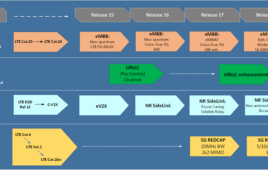Connected car solutions are already out there floating around the marketplace – plug and play options that add value by linking your vehicle to an app. That alone adds more devices, and more data, to today’s LTE network loads. But when it comes to autonomous vehicles, the stats and networks necessary to support them are something else entirely.
According to ExteNet CTO Tormod Larsen, autonomous vehicles will require in the realm of 100 times more bandwidth and a 150 times improvement in latency. Those will go to supporting a number of connections and transactions perhaps 1,000 times higher than what we see today. Think data use amounting to tens of gigabytes in 30 seconds. But there won’t be just one way for the network to handle data coming from the cars. Larsen said when it comes to autonomous vehicles, you can break functions up into three categories: mission critical, massive IoT, and infotainment.
By Larsen’s reckoning, mission critical connections are those that will drive the cars – braking and turning systems, for instance – that require real-time and widespread connectivity. Then will come all the other IoT sensors in the car that convey diagnostic and other performance information, followed by an infotainment connection for activities like streaming music and video on the go.
As far as the mission critical element goes, Larsen said 5G will be instrumental in addressing latency and speed needs. Network advances will also be necessary to handle the sheer number of IoT sensors trying to connect at one time – which Larsen said will require an architecture that brings the network closer to the users.
While macro networks will still be crucial in providing umbrella coverage for things like the IoT, Larsen said denser networks of small cells, distributed antenna systems, and a centralized RAN will be key in making autonomous cars a reality.
In terms of airwaves, Larsen said a patchwork of spectrum will probably be utilized, depending on the application being served and location. Rural markets will likely require lower frequency bands, while urban markets can make use of higher bands in the millimeter wave range. More spectrum from WiFi, CBRS, and the 5.8 GHz band could also be thrown into the mix, he said. Thus, interoperability between these radio interfaces will be another critical component in making it all work.
So how long will it take?
Larsen noted that Tesla already has semi-autonomous vehicles on the road with the technology built into the car. But he said that technology is less effective in dense urban environments where there’s little room for error. Widescale adoption of autonomous vehicle tech will likely start to pick up in 2020 through 2022 with the rise of 5G, he said, with full adoption coming farther down the line.




